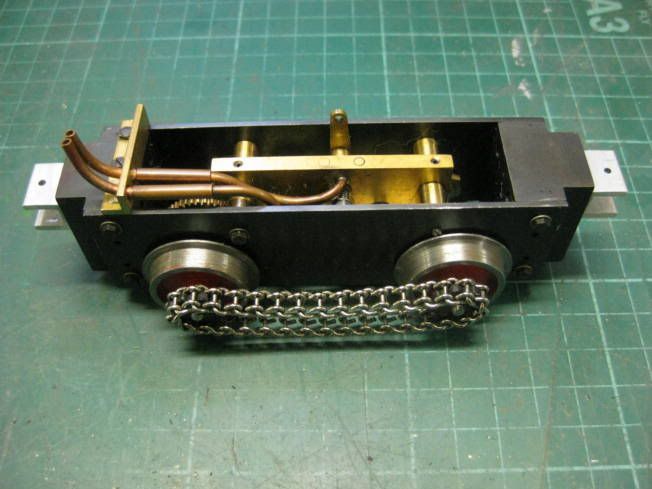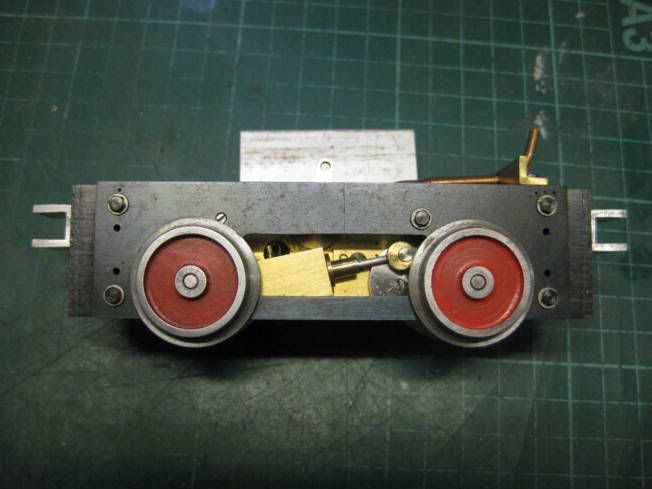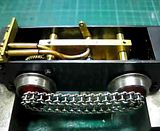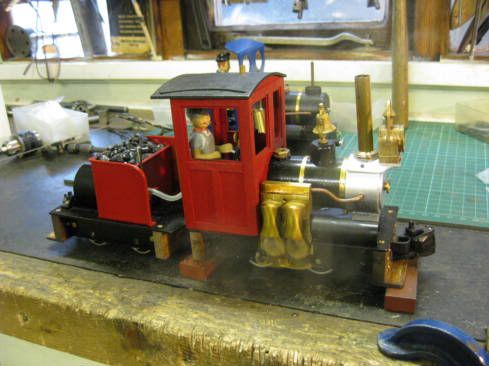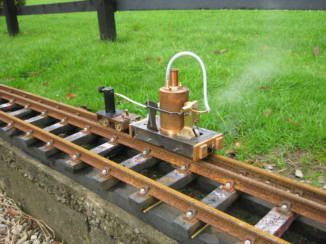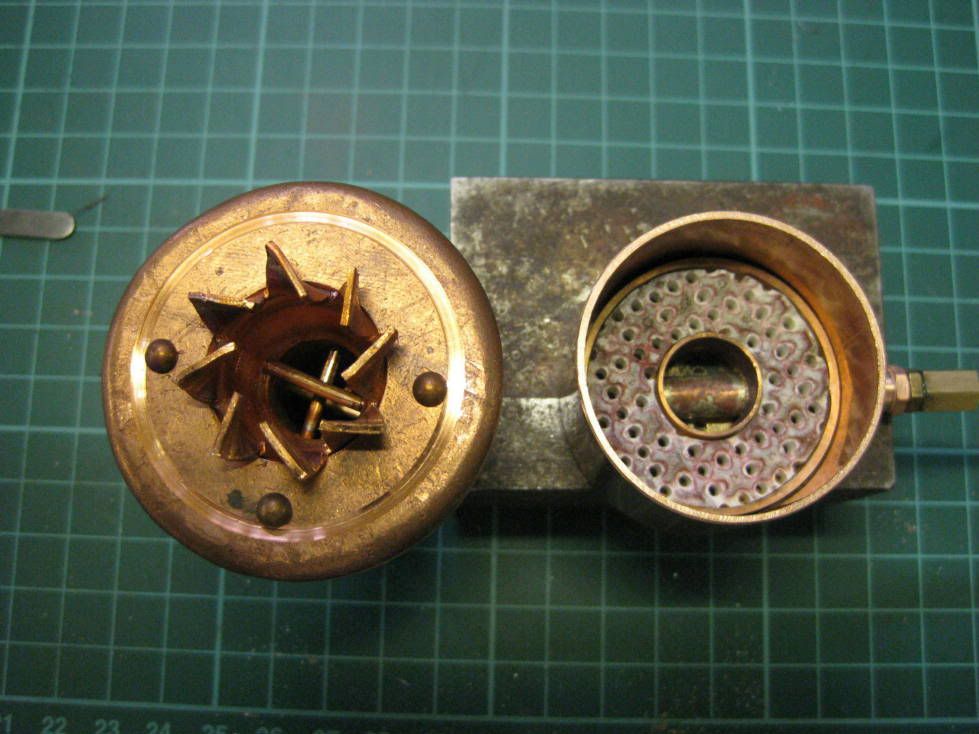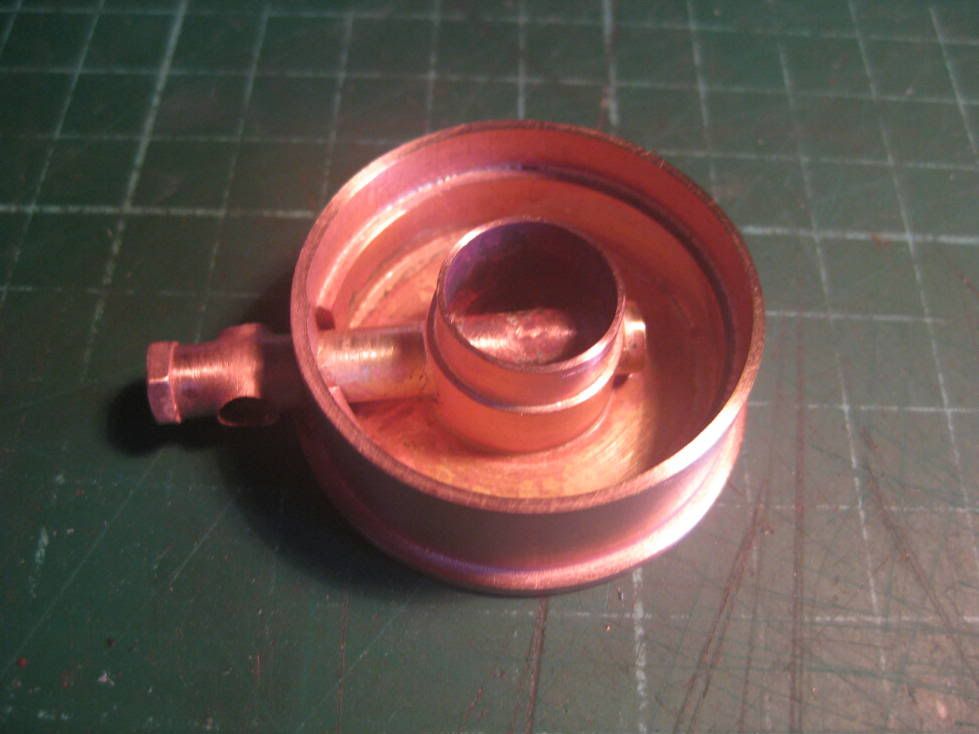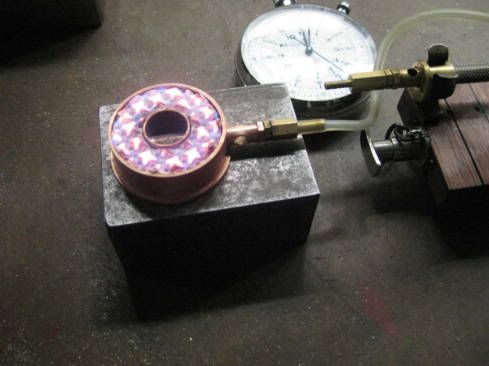Tony Bird
Senior Member
Hi,
This isn't a recently finished project the prototype was finished about four years ago. I mostly play with narrow gauge steam locomotives running on '0' gauge track in the garden. This I have done for the last twenty years having previously made steam locomotives in larger gauges.
I like doing R+D and thought about making a steam motor which would work rather like an electric motor fitted in the smaller narrow gauge prototypes that had inside frame and cylinders. This meant that it would have to be small, self starting and be capable of going forward and backwards. So this double acting twin cylinder oscillating steam engine was designed and built, first as a prototype to see if it was feasible and four others that were fitted with driving gears to check if they were powerful enough to move a locomotive and a reasonable number of rolling stock. The following four photographs show one of the geared engines as yet not fitted to a chassis. The engine has a bore of 1/4" and a stroke of 12mm (it would have had a 6mm bore but I had 1/4" '0' rings in stock). To fit between the frames the width had to be less than 24mm it is in fact 23mm over the cylinders. It will drive a 20mm axle mounted gear (4:1) with axle spacings of just less than 60mm the height of the port block including the reverse valve is 30mm.
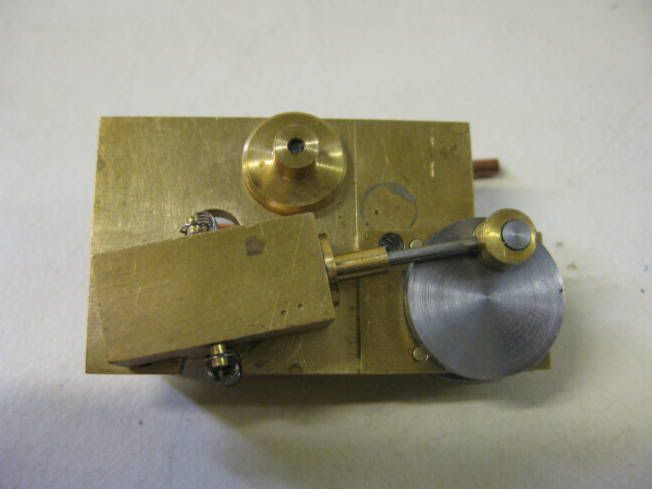
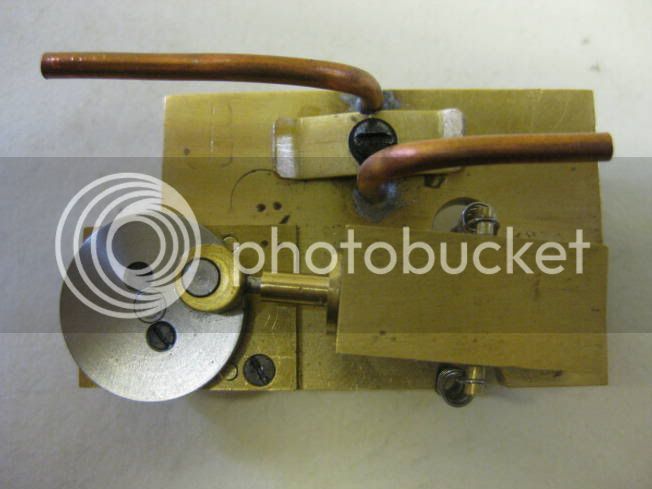

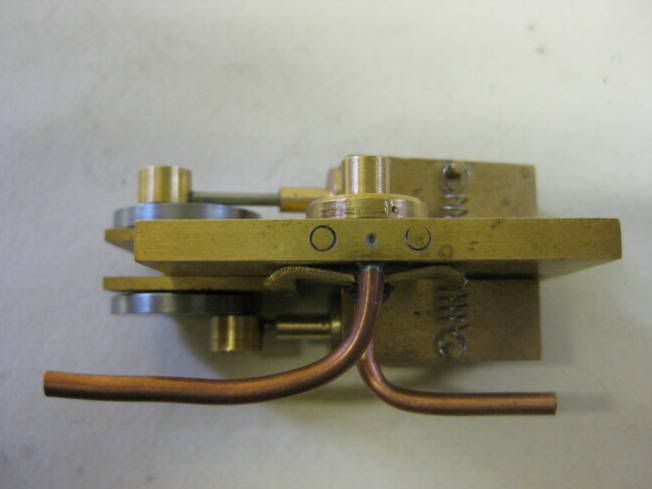
Video of prototype working under pressure and Vacuum.
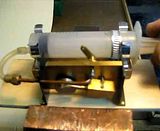
So far the only model that has been powered with this engine is an 'Idris'. This locomotive designed by Dave Watkins had direct drive cylinders to its leading axle. At the time I was building some of these locomotives and decided to use one as a test bed for a modified engine (the reversing valve had to be moved). It was only intended as a temporary arrangement as can be seen by the poor pipe work and extra hole in the reversing lever for the original engine. As can also be seen from the state it is in, it has had a lot of running and has yet to be converted back. It has no better performance than the original design but will go slower around tight curves (vertical boiler locomotives generally have long wheel bases for their size due to their boiler being between their axles).

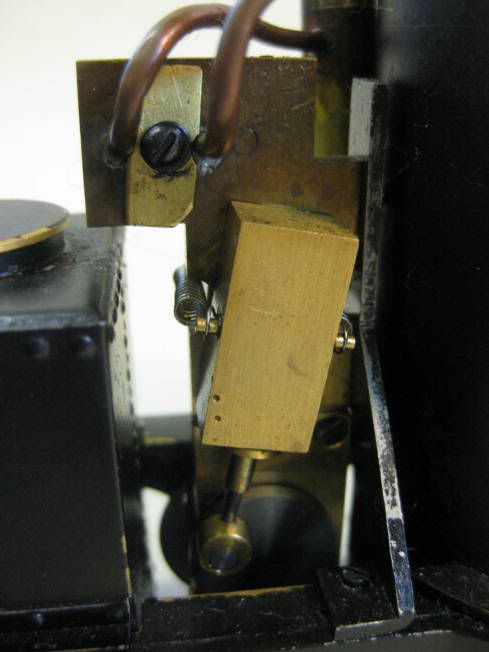
The following two photographs show how the motor fits into the type of locomotives it was designed for.
From top
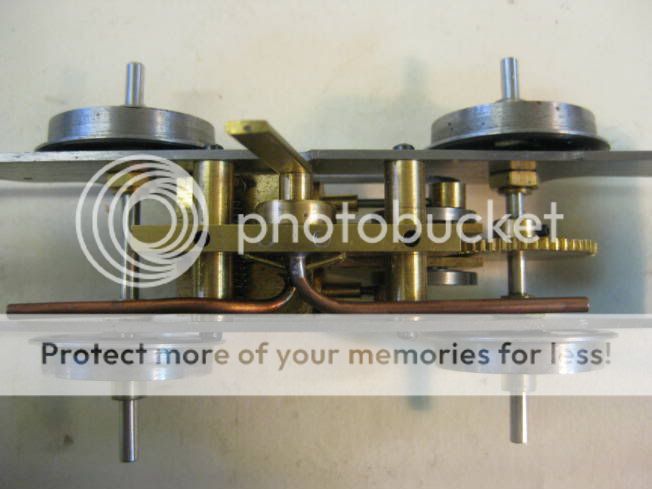
And bottom.
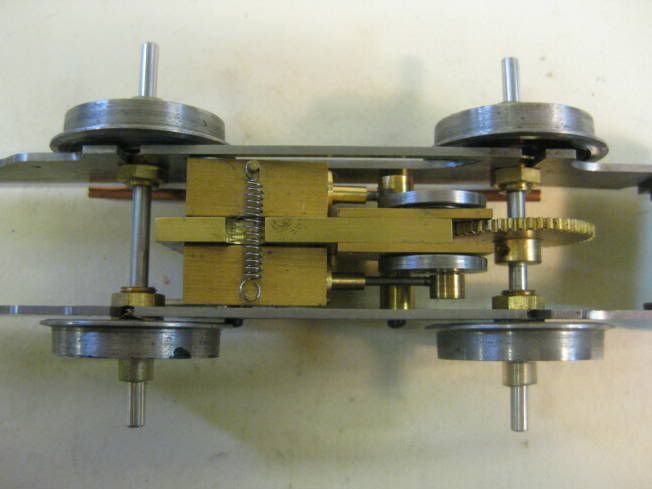
Hope this is found to be interesting.
Regards Tony.
This isn't a recently finished project the prototype was finished about four years ago. I mostly play with narrow gauge steam locomotives running on '0' gauge track in the garden. This I have done for the last twenty years having previously made steam locomotives in larger gauges.
I like doing R+D and thought about making a steam motor which would work rather like an electric motor fitted in the smaller narrow gauge prototypes that had inside frame and cylinders. This meant that it would have to be small, self starting and be capable of going forward and backwards. So this double acting twin cylinder oscillating steam engine was designed and built, first as a prototype to see if it was feasible and four others that were fitted with driving gears to check if they were powerful enough to move a locomotive and a reasonable number of rolling stock. The following four photographs show one of the geared engines as yet not fitted to a chassis. The engine has a bore of 1/4" and a stroke of 12mm (it would have had a 6mm bore but I had 1/4" '0' rings in stock). To fit between the frames the width had to be less than 24mm it is in fact 23mm over the cylinders. It will drive a 20mm axle mounted gear (4:1) with axle spacings of just less than 60mm the height of the port block including the reverse valve is 30mm.




Video of prototype working under pressure and Vacuum.

So far the only model that has been powered with this engine is an 'Idris'. This locomotive designed by Dave Watkins had direct drive cylinders to its leading axle. At the time I was building some of these locomotives and decided to use one as a test bed for a modified engine (the reversing valve had to be moved). It was only intended as a temporary arrangement as can be seen by the poor pipe work and extra hole in the reversing lever for the original engine. As can also be seen from the state it is in, it has had a lot of running and has yet to be converted back. It has no better performance than the original design but will go slower around tight curves (vertical boiler locomotives generally have long wheel bases for their size due to their boiler being between their axles).


The following two photographs show how the motor fits into the type of locomotives it was designed for.
From top

And bottom.

Hope this is found to be interesting.
Regards Tony.





